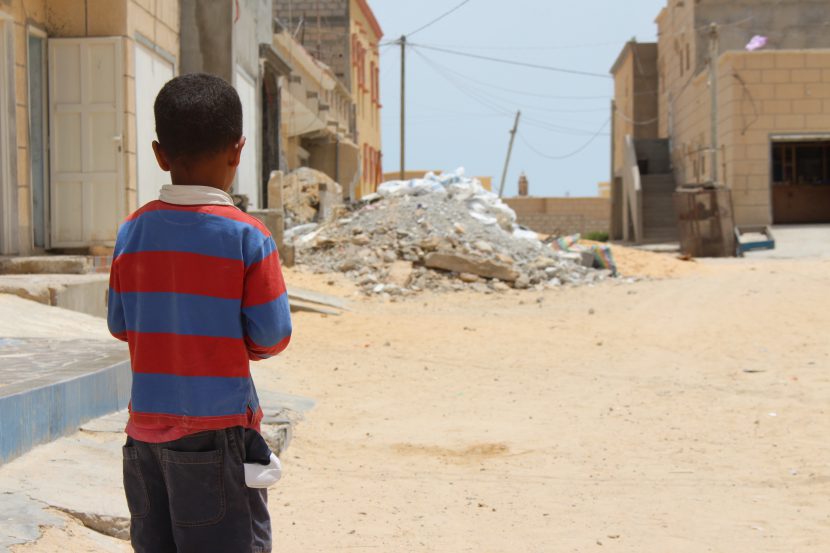General Comment No.21 (2017)
The UN Committee on the Rights of the Child has developed a General Comment on children in street situations. This is a monumental development at the highest level that will influence policy and practice at international, national and local levels.
Children in street situations suffer multiple violations of their rights; they are both urgent and a complex issue for policy-makers to deal with. Until now there has never been an authoritative interpretation of the UN Convention on the Rights of the Child (hereinafter UNCRC) in relation to children in street situations.
General Comment No.21 will provide the guidance states need to scale up appropriate rights–based approaches within this sector, enabling partnerships with non-government actors i.e. NGOs to be agiler and more responsive.
Key Articles
- Article 2:- Non-Discrimination States are widely encouraged to spread the present general comment within governments, legal and administrative bodies, to children in street situations, parents and caregivers, private sector and civil society. All channels of communication are to be explored i.e. print media, internet and children’s own communication means such as storytelling should be used, including sign language and easy to understand formats for children with disabilities and limited literacy levels.
- Article 6:- Right to Life should not be interpreted narrowly. For example, in the case of Villagran Morales et al v Guatemala (1999) where police officers tortured and murdered three children and two young people in street situations, the Inter-American Court of Human Rights ruled that arbitrary privation of life is not limited to the illegal act of homicide but extends to the deprivation of the right to live with dignity. This case definitely requires an interpretation of the right to life that encompasses the minimum conditions for a life with dignity.
- Article 6:- Right to Survival & Development States are expected to interpret “development” as a holistic concept, embracing the child’s physical, mental, spiritual, moral, psychological and social development. Programmes can only be effective when they acknowledge the realities of children in street situations.
Potential Avenues
There are different approaches which can be used with respect to children in street situations :
- Child rights approach whereby the child is respected as a right holder and decisions are often made with the child.
- Welfare approach involving the “rescue” of children, whereby the child is perceived to be an object or victim of street and decisions are made for the child without serious consideration of his or her view.
- A repressive approach whereby the child is perceived to be a delinquent.
The welfare and repressive approaches fail to take into account the child as a right holder which further violates their rights by forcibly removing a child from the street.
Hence applying a child rights approach is not only a moral and legal imperative but also the most sustainable approach for identifying and implementing long-term solutions with children in street situations.
“Living on the streets does not mean that we cannot have rights”
Although the UNCRC does not explicitly refer to children in street situations, the Committee states “all of its provisions are applicable to children in street situations who experience violations of a large majority of the Convention’s articles”.
In total 327 children and young people who are in street situations from 32 countries were consulted in seven regional consultations.
A child rights approach ensures respect for the dignity, life, survival, wellbeing, health and development, participation, right to be heard and non-discrimination of the child as a rights holder.
Data is not systematically collected so it is not known how many children are in street situations. The absence of data makes these children invisible which leads to policies not being developed or measures that are short-term. This concerns every state.
In 1993 there was a surge of international interest in street children following Candelaria Massacre in Rio de Janeiro where 8 street children were shot dead and several others were wounded by police whilst sleeping on the steps of a church.
The international community severely condemned the attack and many in Brazil asked for the prosecution of those who shot the children. This massacre highlights the dangers that children in street situations face.
Children in street situations are diverse in terms of age, sex, ethnicity, nationality, disability, sexual orientation. This diversity implies different experiences, risks and needs. Nature and time spent physically on the street vary significantly from child to child.
Key preconditions for the improvement of street children’s position
- Identifying and sharing rights-based practices that have been shown to be effective, policies, monitoring and capacity building.
- Cooperation among states, UN bodies and agencies, regional organisations and civil society organisations is essential for the adequate protection of children crossing borders as migrants, refugees and asylum seekers and as victims or survivors of cross-border trafficking.
To learn more about Humanium visit our website: www.humanium.org/en
Written by: Igi Nderi
Proofread by: Saurabh Kumar
References:
- http://streetchildren.org/uncrc-to-develop-general-comment-on-children-in-street-situations/
- https://www.childinthecity.org/2017/07/19/change-our-story-un-calls-for-action-on-street-children/
- http://bettercarenetwork.org/library/particular-threats-to-childrens-care-and-protection/children-living-or-working-on-the-street/un-crc-general-comment-no-21-2017-on-children-in-street-situations
- http://www.streetchildrenresources.org/wp-content/uploads/gravity_forms/1-07fc61ac163e50acc82d83eee9ebb5c2/2017/07/General-Comment-No.-21-2017-on-children-in-street-situations.pdf
- https://iachr.lls.edu/sites/iachr.lls.edu/files/iachr/Cases/Street_Children_-Villagran_Morales_et_al-_v_Guatemala/Villagr%2B%C3%ADn%20Morales%20et%20al.%20v.%20Guatemala.pdf


